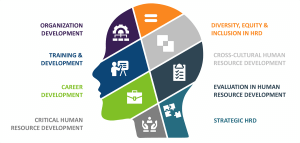The use of AI in marketing is increasing across the Asia-Pacific region. Learn about the most popular AI tools and possible stumbling blocks for marketers.
The adoption of Artificial Intelligence (AI) in marketing has been rapidly increasing in the Asia-Pacific Region. The region’s tech-savvy population, coupled with the growth of e-commerce and digital marketing, has made it an ideal environment for AI-powered marketing tools.
As AI technology continues to evolve, we can expect to see more advanced AI-powered marketing tools being adopted in the region. However, with each new innovation comes a new challenge.
In this article, we will discuss the role of AI in marketing and the possible obstacles that marketers in the Asia-Pacific region may face while trying to adopt AI technology on a larger scale.
Future Prospects of AI Tools
The Asia-Pacific region is gearing up for significant changes in 2024. According to Forrester, one in four marketers in the APAC region will double their customer engagement budgets, placing emphasis on AI-based customer-centric marketing to drive growth. With the adoption of AI in marketing, the market is estimated to reach US$ 26,023.61 million by 2028.
Based on a recent study conducted by SOCi Inc., the focus when applying AI in marketing is currently placed on the following six AI tools:
- AI data analysis: helps marketers understand consumer habits and predict purchasing behavior based on past data.
- AI content generation: assists in creating content for various channels.
- Dynamic Pricing AI: allows marketers to adjust prices based on factors like traffic volume to maximize ROI.
- AI chatbots: enhance customer service and generate personalized recommendations for increased conversions.
- AI conversion rate optimization: automatically selects the best content variant for each individual, leading to higher conversion rates.
- Voice-enabled AI: ensures a more natural and seamless user experience.
Obstacles to Adopting AI in Marketing
It’s one thing to want to adopt AI marketing fully, but quite another matter to find the correct strategies and tools to get the results you want:
- There are no tools that provide cradle-to-grave campaigns or projects yet. Marketers need to use multiple tools for different tasks within their responsibilities. They often have to switch between various tools to accomplish pieces of each project. It’s a major struggle to find the best tool for their needs at a price that suits them.
- AI doesn’t have truly original ideas. It just combines other ideas into something that looks a little different. Marketers can use AI to speed up the creative processes, but if you want to come up with something unique, you’ll have to think of it yourself.
- AI can’t replicate human emotional intelligence and human creativity. If your customers feel that they’ve become data subjects or that you’re playing around with AI experiments, you’ll lose their loyalty. AI cannot replace genuine interaction and connection with people.
Marketers should regularly check their work results to find gaps and adjust output to fix machine errors.
The Privacy Issue
There are five reasons why privacy and security concerns will increase with the use of AI in marketing:
- Customers are genuinely concerned about their private data being bandied around by AI tools with no guardrails.
- Businesses worry that their data may not remain private when they use different tools. It’s almost impossible to find an AI marketing tool that won’t use your company’s data for further AI training.
- Marketers who deal with AI tools directly lose all expectations of privacy. AI tools aim to learn as much as possible about the user. That means you, the marketer!
- Marketers must guard against inaccuracies or gaps in the data.
- AI modeling can introduce biases, which may render the data invalid and expose companies to legal action.
Businesses in the Asia-Pacific region must acknowledge these issues and come up with a plan to address these concerns. One simple solution to minimize the possible privacy issues of AI tools is to use a virtual private network (VPN).
Many marketers may wonder, “What does a VPN do?” It encrypts data, masks users’ IP addresses, and replaces them with different ones. This helps to protect sensitive information and maintain anonymity online. Additionally, using a VPN to access AI tools can provide a more secure connection, even when using public networks, which are often vulnerable to cyber attacks.
A Few Final Words
The AI marketing practices in the Asia-Pacific region are still fluid. Marketers are getting used to AI providing simple answers. They are adjusting workflows to include AI tools in their strategies. Most try to compensate for AI’s current shortcomings in the process on the fly, hoping for more robust tools and better checks and balances to come along in the fullness of time.
For now, AI-automated tasks allow marketers to focus on creative activities while AI handles the hard work. The future belongs to AI marketing as long as we acknowledge the stumbling blocks and work on ways to mitigate the risks to data privacy.
























